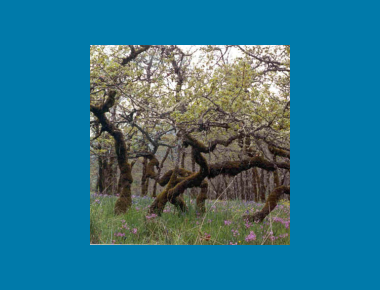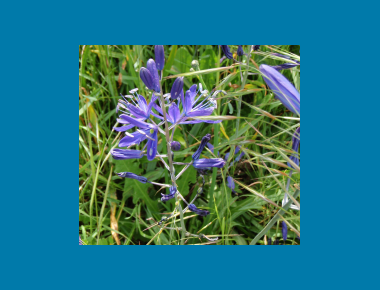Facilitating the protection and restoration of species and ecosystems at risk on BC’s South Coast
Garry Oak
True Garry oak communities are ones in which Garry oak is naturally occurring and the associated vegetation resembles aspects of the ecological processes from pre-colonial periods. This ecological community can vary from dry, open woodlands with a rich native wildflower and grassland community (e.g. the common camas meadows of southeastern Vancouver Island) to small colonies of Garry oak trees on upland bluffs and rocky outcroppings and south aspect hillside clearings (like Sumas Mountain in the Fraser Valley). Some communities can have deep soil profiles, seeps and seasonal wetlands, but well drained soils and high levels of sun are key. Other species associated with Garry oak include the showy and well known common camas - a wildflower with a starchy tuber cultured as a food source by First Nations, shrubs like oceanspray, hairy manzanita (a type of low growing evergreen berry producing plant), Saskatoon berry, common snowberry and dull Oregon-grape. One red-listed butterfly - Propertius Duskywing is entirely dependent on Garry oak for its larvae. Garry oak communities may often be found near, or in combination with, other communities that do not contain Garry oak trees, though they often have similar characteristics in soils, disturbance regimes and understory plant species. These would include coastal Douglas-fir, arbutus and lodgepole pine communities. On the South Coast Garry oak communities are very rare, restricted to a few occurrences in the Fraser Valley (Sumas Mountain), Fraser Canyon (Yale) and the most northern and somewhat outlier population on Savary Island in the Sunshine Coast Forest District. The red-listed community for the South Coast is referred to as Garry oak - bigleaf maple - cherries.
Download Species Fact Sheet in PDF
RESOURCES
�A joint venture resource providing comprehensive information on a range of species and ecological communities specific to the Coast Region of BC (including the South, Central and North Coast, Vancouver Island and Haida Gwaii).











